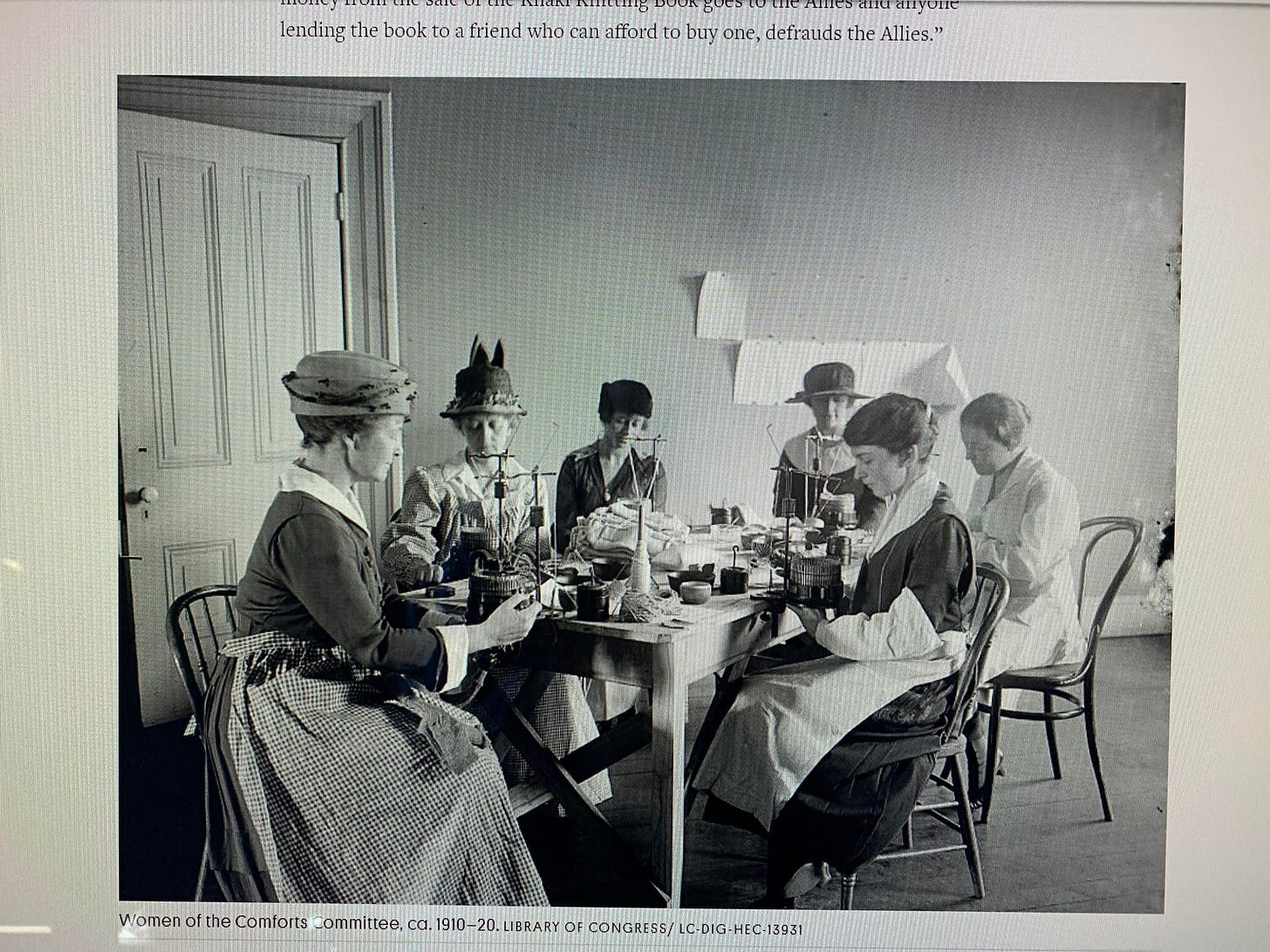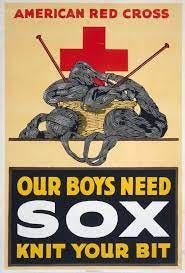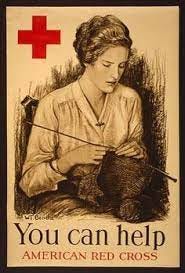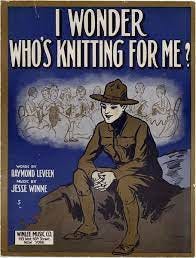Knit Your Bit
War knitting history
What can I do to help the war effort? Knit your bit!! Not every woman on the home front was Rosie the Riveter, and in an effort to support their sons, fathers, brothers, and husbands who were serving, they knit their bit.
The American Red Cross was at the forefront of the knitting during war movement. The call for knit garments started at the beginning of WW I and continues thru today.
While soldiers were issued a basic set of clothing, it did not contain hats, gloves, scarves, or sweaters. The cold European theater of war necessitated that those items were badly needed. The American Red Cross put out the call for Americans to do their part and help provide those items. Local chapters issued the yarn, which had to be olive drab or navy blue, and the patterns for folks to knit. They also handled the distribution of the knit garments to the troops.
Over the 19 months of U.S involvement in WW I, women “knit for Sammy” (Sammy is a reference to soldiers, and Uncle Sam) over 24 million pieces of knit clothing.
In January 1942 the War Production Board designated the American Red Cross as the clearing house for all stateside produced knit garments. This also granted them priority status for receiving wool and yarn for this monumental effort. Wool, along with meat, salt, sugar, and other foodstuffs, was rationed. World wide wool production and shipping was interrupted during the war. Due to this rationing and interruption of wool, the Seattle Red Cross had its members card and spin the needed yarn, at a cost savings of $3.00 per pound.
The American Red Cross produced patterns for sweaters, hats, gloves, fingerless gloves, mufflers, socks, bandages, walking cast toe socks, cap for bandaged head, and Man’s sweater coat. Each garment was inspected by the Red Cross and if it met their stringent standards, was labeled with the chapter name, and “Gift of the American people through the American Red Cross”.
This effort on the home front gave a sense of peace and accomplishment to the families of service men and women, as well as allowing people to feel they had an active part in the vast conflict. Millions of garments were produced to meet the needs of service men and women, and refugees.
Even today, the American Red Cross still has knitting chapters in existence. The Veteran’s Administration has turned back to the A.R.C. to help our veterans from the Gulf, Iraq, and Afghanistan wars. If you wish to help our veterans in this way, please call American Red Cross Service to Armed Forces Office in Norfolk at (757) 440-1111.
Swiftly, to and fro, Let your needles fly!
Be not yours to know, Pause, for tear or sigh.
Stitch by stitch they grow, Garments soft and warm
That will keep life’s glow, In some shivering form
Sweater, muffler, sock, For the soldiers’ wear!
List to pity’s knock, For those “over there”
Children’s voices too, In the sad refrain
Wring our hearts anew, From that world of pain
Banish for a while, Tints of brighter hue
Welcome with a smile, Khaki, grey and blue
Days are cold and drear, Nights are long and bleak
Thoughts of home are dear, Where the cannons shriek
Let some simple thing, That your hand employs
Cheer and comfort bring, To our gallant Boys
May there be no end, To what love supplies!
Thus their share we’ll send, To our brave Allies!!
A. M. D. October 1917
Links to “Knit Your Bit” articles and patterns
Knit Your Bit Patterns (Natl WWII Museum)
Blessed Be!
On a side note,
has a wonderful article about Thinkers Tea and the benefits of sage. Check it out! Thinkers Teaand
has a look at the realities of securing your own foods. The Story of Food





The circular sock knitting machines played a good part in the effort as well.Thanks for the links. Thank you for the story.